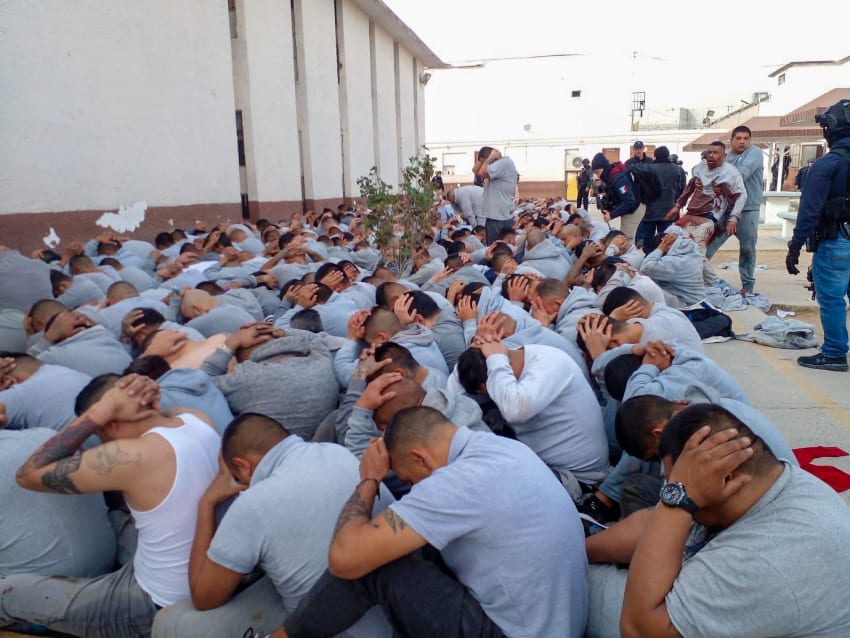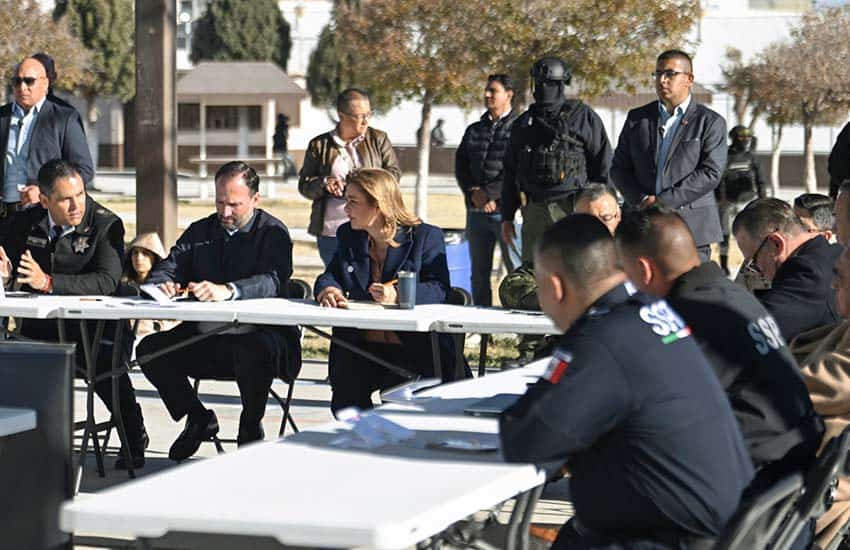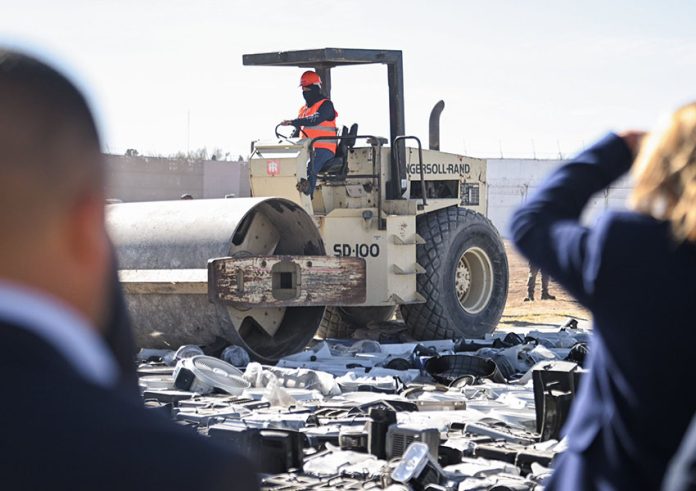The prison in Ciudad Juárez that was the site of a massive escape on New Year’s Day is back in the news this week after some stunning revelations about what was hiding inside.
Turns out that Cereso No. 3 prison was stocked with contraband such as guitars, drums, refrigerators, grills, plasma televisions, video game consoles and air conditioners — and even a mechanical bull — according to Chihuahua Gov. Maru Campos and other state officials.
“The privileges are over,” Campos declared on Tuesday.

The violent prison break on Jan. 1 allowed some 30 prisoners to escape, while leaving 17 people dead and 13 others wounded.
In the days and weeks afterward, state law enforcement authorities carried out an inspection of Social Readaptation Center (Cereso) No. 3, where they found a cache of items that looked “more like what could be seized at an underground party than a prison,” as the newspaper El País put it.
Campos revealed that approximately 2,800 objects were found and destroyed, including dozens of speakers, horns and other instruments, privacy screens, washing machines, and electric fans and heaters — in addition to the previously mentioned objects.
There was also a “snake in a terrarium” and “thousands of pairs of sneakers,” El País reported. “Weapons, drugs and cash were taken for granted.”
Officials said they also found religious articles, such as posters of Aztec deities and Santa Muerte — i.e., Saint Death, a spiritual icon popular in cartel culture. One official said US $85,000 in cash was found among the “VIP cells,” where various calibers of weapons were also located.
Also discovered was a secret door through which the various prohibited objects apparently entered the facility. Just over a meter tall, the door — now sealed with iron bars by state authorities — was found behind a garbage bin in a room supposedly used exclusively by staff.
“It is a door that leads to the outside” and was beyond the range of security cameras, said Gilberto Loya, the head of the state SSP. “It’s a place where anything could come and go, from people to whatever you wanted to put in and get out of there.”
State authorities said they now believe that this is where all the confiscated objects entered. There was no information available on when the door was built.
The prison, and all of the state’s prisons were turned over to the control of state authorities on Jan. 31, according to Campos. Previously, they had been in the charge of the state Attorney General’s Office.

“This is not about a transfer, but about taking command in the Ceresos to have better control and offer greater security to the Chihuahuans,” Campos said on Twitter. Prisons throughout Mexico are referred to as Ceresos. “It is for no other reason.”
For years, human rights organizations have warned that the Ciudad Juárez prison was controlled by the inmates themselves and that there was very little surveillance.
In its 2019 annual report, the Chihuahua State Human Rights Commission stated: “Security is practically under the control of the inmates themselves. In some modules, some even had keys to areas such as classrooms and dining rooms.”
Some 3,900 inmates live in Cereso No. 3, well above the population for which the prison was built, officials said.
Loya said that “once the cleanup inside Cereso 3 is finished, the infrastructure of the place will be rehabilitated, because it was detected that extensions had been made in many cells.” In addition, access to corridors will be reinforced with padlocks, he added.
The early-morning prison break on Jan. 1 occurred after gunmen attacked the prison seeking to free Ernesto Alfredo Piñón de la Cruz, alias “El Neto.” Piñón is the local leader of a gang known as Los Mexicles.
Ten guards and seven inmates were killed in the battle to free Piñón, and of the 27 to 30 prisoners who escaped in the melee between guards and prisoners that ensued (different accounts give different numbers), 14 are still at large, according to Luis Rodríguez Bucio, President López Obrador’s newly appointed federal undersecretary for Security and Citizen Protection.
Four of the escapees have been killed, Rodríguez said, including Piñón, who died in a Jan. 5 gun battle with police.
With reports from El País and Sin Embargo
